About Session
Meet the candidates—hear their vision in short statements, then cast your vote to shape our leadership.
Large Company
(5,001 or more full time employees)
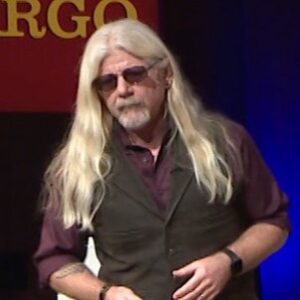
Peter Bordow
Distinguished Engineer/Managing Director, Wells Fargo
We are a driver of global adoption of quantum security technologies.
I lead the Enterprise Quantum Security program and several industry and standards bodies in this space.
Foster the practical application of these technologies – both enabling tech and defensive technologies, globally.
Expand the participatory conversation around quantum security and help chart (and facilitate) the course for early quantum tech adoption in medical and other fields.

Dani Couger
Quantum Technologies Lead, Lockheed Martin
Lockheed Martin has 14 Technology domains as a part of the 21st Century Security strategy. One of those selected and prioritized tech domains is Quantum Technologies, as the lead I oversee 3 main investments in quantum sensing, quantum remote sensing & communications and quantum computing. Lockheed Martin is continuously increasing it’s investment in quantum technologies.
I believe I am best fit for this position on the steering committee for the following 5 core reasons. (1) Strategic Vision & Execution – My role as the corporate quantum lead has required me to translate long term quantum roadmaps into actionable research programs. I can help the Committee set realistic, impact driven priorities that align with QED C’s vision of making quantum technology “practical and common.” (2) Cross Sector Collaboration – I have orchestrated collaborations among aerospace, defense, academia, and international partners. This experience equips me to guide QED C in building the same kind of multi disciplinary coalition that the organization champions. (3) Policy & Regulatory Insight – Managing export control and IP for cutting edge quantum work gives me a nuanced understanding of the policy challenges that the Steering Committee must navigate, especially when shaping QED C’s policy positions. (4) Advocacy & Outreach – My extensive speaking record and leadership in inclusion initiatives enable me to amplify QED C’s message, attract new members, and foster an inclusive community—core to the Committee’s mandate of “community building and collaboration.” (5) Mentorship & Talent Development – Through mentoring engineers and leading diversity councils, I bring a proven commitment to developing the next generation of quantum talent, directly supporting QED C’s goal of growing the quantum economy. My blend of technical depth in quantum science, proven program management excellence, cross industry partnership experience, and strong commitment to inclusive community building align perfectly with the Steering Committee’s responsibilities. I can help steer QED C toward impactful, collaborative, and growth of the quantum economy.
Over the coming year, I hope to deepen community building by expanding member participation across all Technical Action Committees, with a particular focus on the Workforce and Enabling Technologies TACs. The quantum sector is experiencing a rapid surge in talent demand—both large‐scale integrators and smaller specialist firms are hiring, but it is the enabling technology companies—those developing quantum hardware, sensors, communications and thermodynamic platforms—that require the broadest mix of engineers, computer scientists, physicists, and interdisciplinary specialists. By broadening engagement in these two TACs, QED C will create a coordinated pipeline that aligns academic training, internal talent development programs, and external recruitment to meet the industry’s expanding workforce needs. I propose the effort be supported by quarterly “skill mapping” workshops and a mentorship program that pairs experienced quantum engineers with emerging talent across member organizations. Over the next 5 years, I would like to see a standardization of a “Quantum Readiness Framework” for end users (commercial chemistry, finance, logistics, aerospace, automotive). A framework will help members package solutions for these markets in a more rapid way that is aligned to the roadmaps and needs of their individual member organizations. Establish “demo days” at international government forums, a new twist on how these are currently done at the US government facilities. A duel approach to the domestic and international coordination of showcase for member companies will allow QED-C to become the global leading in convening quantum industry and academia. This will put QED-C member organizations in the best place for commercialization as the quantum industry continues to grow. Over the next 10 years, I would be supportive of the follow tall goals for QED-C: (1) Institutionalize quantum technology as a “critical national infrastructure”, by 2035, QED C backed standards will be referenced in government procurement for defense, aerospace, and critical infrastructure systems (3) Own the global “Quantum Talent Registry” – the leading searchable, credential verified database that will continue to enable efficient talent placement and mobility across regions.
(1) Mentorship program that pairs experienced quantum engineers with emerging talent across member organizations. (2) ) Mitigate quantum winter risk by establishing a “continuity reserve” (% of annual membership dues) to support members during any prolonged funding dip

Sam Stanwyck
Group Product Manager, Quantum Computing, NVIDIA
NVIDIA sees quantum computing as a critical part of the future of computing, and our interest is to make practical, scalable quantum computing a reality by tightly integrating QPUs with accelerated classical systems. We’re not building a quantum computer; we’re building the platform that lets the world build, program, simulate, and operate them. Concretely, we focus on four areas: Hybrid quantum-classical computing: Co-designing low-latency pathways between QPUs and GPU/CPU supercomputers so real workloads can span both. Software & simulation: CUDA-Q and our GPU-accelerated simulation libraries enable algorithm research, device design, and performance studies at scales impractical on CPUs alone—critical for benchmarking, compiler work, and QEC studies before hardware matures. Control & error correction acceleration: Offloading decoding, calibration, and model-based control loops to GPUs to increase throughput and reduce feedback latency—key to demonstrably better logical performance. Ecosystem enablement: Working with QPU makers, control-system vendors, and leading HPC centers to stand up GPU-QPU systems, contribute to open software stacks, and support education and workforce development.
I have had the privilege of working both deeply and broadly in quantum computing. At Rigetti Computing I worked on the fabrication and quantum engineering of superconducting qubits, including leading a team to deliver 25-qubit quantum computers to customers. At Keysight Technologies I built software for quantum control systems. Now at NVIDIA I work across the entire ecosystem, on algorithms research, benchmarking, quantum error correction, system integration, and more. I would be excited to bring my experiences building multi-party partnerships between industry and the public sector to benefit QED-C.
I believe we’re at a critical juncture in quantum computing. While there is a long road ahead, I believe the investments and decisions made in the next 5 years could shape the future of quantum for decades to come. Next year: Prioritize national infrastructure that de-risks the path to fault-tolerant quantum computing. Stand up open, hybrid testbeds at U.S. HPC centers with stable interfaces; fund shared facilities for cryogenics, precision photonics/lasers, vacuum and UHV, RF/microwave, timing/distribution, and advanced packaging. Launch domestic programs for control/readout ASICs, materials/isotope supply (e.g., Si-28, Yb-171), calibration/QEC telemetry standards, and secure data/compute fabrics. Pair these with procurement templates that reward on-shore manufacturing, trusted suppliers, and long-lived roadmaps over demo-driven metrics. Five years: Converge on pre-competitive interoperability and reliability standards spanning compilers, control, and error correction—measured by logical performance, stability, and service availability. Operate accredited U.S. conformance labs and reference pipelines (sim→compile→control→QEC) so platforms can be evaluated consistently. Build workforce depth around hybrid operations and QEC at scale, and harden supply chains with dual-sourced critical components and domestic advanced-packaging capacity. Ten years: Make quantum-accelerated supercomputing a standard national capability: QPUs co-scheduled with classical accelerators on common fabrics, governed by mature telemetry, safety, and audit. Demonstrations of fault-tolerant workloads emerge from U.S. testbeds with reproducible, end-to-end evidence. QED-C’s role becomes stewardship of the conformance suite, coordination of cross-agency investments, and continual strengthening of domestic manufacturing for control electronics, photonics, cryogenics, and specialized materials. Through all stages, the emphasis is on infrastructure, standards, and resilient supply chains—so U.S. scientific leadership converts into durable, scalable FTQC capability.
I believe the single most impactful thing QED-C could accomplish in the next 3 years is to establish a U.S. quantum enabling tech supply chain initiative. This is feasible, aligned with national interest, something the community could agree on, and would create the conditions for long-term U.S. leadership in quantum.
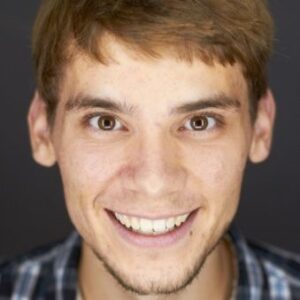
Jonathan Wheeler
Optical Engineer, Northrop Grumman
Developing quantum sensors for DoD applications.
Leading quantum sensor development programs for DARPA.
Align industry capabilities with national security and defense needs.
Align industry capabilities with national security and defense needs. Educate and engage community in quantum technologies and applications
Small Company
(5,000 or fewer full time employees)
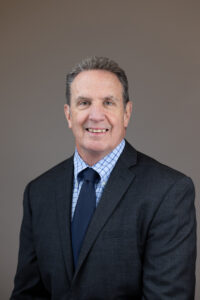
Tim Day
Senior VP and General Manager, DRS Daylight Solutions
Our organization’s mission is to serve the QIST ecosystem as a critical enabler by addressing a foundational bottleneck: the commercial availability of scalable, high-precision, reliable photonics for complex quantum systems. We have built a business around delivering integrated photonics systems (“Photonics Engines”), integrating best-of-breed hardware, software and services that enable Quantum Systems Integrators to scale their businesses.
Dr. Timothy Day has amassed over 35 years’ experience as an executive in the photonics industry. His track record as a servant-based leader to his stakeholders, his experience as an Aerospace & Defense executive involved in shaping governmental policy initiatives, and service as a trusted advisor (and Board Member) to CEOs and senior executives throughout the quantum industry make him an excellent candidate for a position on the QED-C steering committee. Dr. Day earned his Ph.D. degree in Electrical Engineering from Stanford University; his thesis entitled, “Frequency Stabilized Solid State Lasers for Coherent Optical Communications” is still used as a foundational reference in today’s atomic-molecular-optical (AMO) physics labs for many quantum applications. Dr. Day co-founded New Focus where he developed an extensive patent and product portfolio for markets such as telecommunications, atomic spectroscopy and laboratory research. As New Focus’ Senior Vice President and Chief Technical Officer, Dr. Day helped transition the company through it’s Initial Public Offering (IPO) in May 2000, and contributed to raising over $500M through private equity and two (2) public offerings, with over 2,000 employees across eight (8) sites worldwide. Dr. Day and his team completed two (2) acquisitions and realized over $330M in total revenue, and ultimately oversaw the sale of the company to Bookham Technology PLC for $338M in 2004. Subsequently, Dr. Day co-founded Daylight Solutions, an advanced manufacturer of photonics products for molecular detection, illumination and imaging. As Daylight’s CEO and Board Chairman, he oversaw Daylight’s growth to become the worldwide leader in Quantum Cascade Laser (QCL) based products in both defense and commercial markets. In June 2017, Dr. Day orchestrated the acquisition of Daylight by Leonardo DRS for $150M, and currently serves as Senior Vice President and General Manager of the DRS Daylight Solutions business unit. Since it’s beginning in 2005, Daylight has shipped over $900M in total revenue under Dr. Day’s leadership. Dr. Day has served on the Board of Directors for a variety of organizations, including Daylight Solutions (Chairman) Infleqtion, Nano PharmaSolutions, and the Northern Colorado Veterans Resource Center (NCVRC). He also helped establish and served as Chairman of the Industrial Advisory Board for MIRTHE (Mid InfraRed Technologies for Health and Environment; a now graduated NSF Engineering Research Center). He has served as a School Board Member for Maranatha Christian School. He is a frequent guest lecturer at universities including Stanford, CU Boulder, UCSD, San Diego State University, Gonzaga, Westmont College and San Jose State University. He was a visiting Industrial Fellow at CU Boulder’s Optical Science and Engineering Program (OSEP). He is a Fellow of SPIE and Optica industrial societies, and is a Member of the IEEE and Executive Advisory Board of SPIE.
The importance of U.S. leadership and strength in QIST cannot be overstated. Within the next decade, the general population will begin to recognize the quantum industry as it transitions from a scientific curiosity into the fabric of everyday critical industries such as energy, finance, healthcare, materials, defense & aerospace and more. QED-C has already laid the foundation to become the vital public-private partnership association that provides advocacy, resource and information sharing, networking, standards setting and professional development that are characteristic of other successful industries. The 2025-2028 Strategic Plan does an excellent job of continuing to build this foundation for long-term sustainability and service to its members. QED-C has already established itself as the preeminent quantum industry association in the U.S. Over the next decade, as the quantum industry increases in importance across multiple market verticals, the political influence and advocacy across federal, state and local levels will become increasingly important to continue to fuel its growth.
1) Invest time and energy to deepen relationships with the Executive Director and staff to serve as a trusted advisor across all QED-C areas of interest. 2) Ensure that QED-C members have open access (to me) to voice opinions and provide inputs that can be communicated within the Steering Committee; serve as a trusted advocate for membership into the Steering Committee and QED-C leadership.

Patty Lee
Chief Scientist of Product Technologies, Quantinuum
Quantinuum is a global leader in quantum computing, committed to developing the most powerful quantum computers and the most advanced quantum software solutions. Our mission is to make quantum computing an essential and ubiquitous tool for scientific discovery and commercial applications to improve quality of life for all. Our technology is based on trapped ion quantum charged-coupled device (“QCCD”) architecture, with demonstrated high performance and path to scale. We are focused on developing fault-tolerant quantum computing and broadening the user base through practical applications and accessible platforms. By driving innovation and fostering collaboration, we aim to unlock the full potential of quantum technologies and contribute to a robust quantum ecosystem.
I bring a unique blend of technical expertise and cross-sector experience to the Steering Committee. My record in quantum computing, quantum sensing, and quantum network research across different modalities provides a strong foundation in the science and technology driving the industry. Professionally, I’ve worked across government agencies — including the Department of Commerce and the Department of Defense—as well as in industry, from large corporations to agile startups. This diverse background gives me a distinct perspective on the quantum ecosystem. I understand both the technical challenges facing industry and the practical realities confronting businesses, governments, and academic institutions. I’m deeply familiar with how priorities differ across sectors—and how they can be aligned through collaboration and coordinated efforts. I believe this perspective is especially valuable during this pivotal phase of quantum commercialization. I’m committed to helping the Steering Committee foster meaningful connections between diverse groups, anticipate ecosystem needs, and drive strategic initiatives that benefit the entire community.
Over the next decade, I envision a thriving global quantum ecosystem powered by strategic partnerships across industry, government, and academia. These collaborations will accelerate the advancement of quantum technologies—from foundational research to scalable systems and real-world applications. QED-C will continue to serve as a central hub, helping organizations navigate a rapidly evolving landscape by identifying emerging needs early—whether in supply chain resilience, workforce development, or global standards—and facilitating practical solutions that drive growth. As quantum systems mature, industry will play a key role in translating breakthroughs into commercial impact across computing, sensing, and networking. QED-C will support this progress by fostering a robust supply chain, shaping policy, and lowering barriers to adoption. Importantly, the U.S. can remain the international leader in quantum technologies while working across borders with our allies to advance workforce development, pursue mutually beneficial technology transfer, and ensure U.S. benchmarks become global standards. QED-C sits at a unique position to drive those conversations and collaborations around the world. Looking ahead, the quantum economy will be sustained by a cycle of innovation, investment, and impact. Organizations will benefit from a dynamic environment with abundant resources and talent. QED-C will remain a pivotal force—strengthening community, advocating for strategic investment, and enabling broad deployment of quantum technologies.
If I were elected to the Steering Committee, I have two specific goals in addition to broader objectives for the organization. First, I aim to promote broader use case development for quantum technologies by advocating for programs that make it easier for potential users to explore capabilities and connect with technology providers. Lowering barriers to engagement is essential for accelerating adoption and demonstrating the practical value of quantum solutions across industries. Second, I will work to advance industry collaboration with government and academia to establish rigorous benchmarking metrics that can evolve into global standards. These metrics will help both public and private sectors assess technical milestones more effectively, especially during this critical phase of commercialization for quantum hardware.
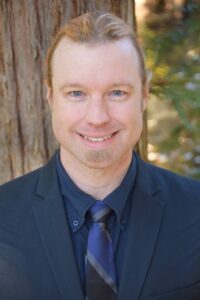
Kirk McGregor
CSO, Iff Technologies
Our company is largely a bioinformatics and immunotherapeutics development company that seeks to gain superior compute and information advantages. We innovatively use QIST to exploit improvements in quantum devices for information processing and sensing, and thereby aim to solve difficult biological and bioinformatics problems for our customers, clients, and R&D partners; our R&D spans pharmaceutical design, clinical trials, database management, healthcare infrastructure, innovative ways-and-means for bringing QIST to bear upon biochemistry, biology, and bioinformatics, as well as customer-defined forward-looking quantum data center architectures, long-range infrastructure planning, and broad economic activity prospects as enhanced and driven by QIST. Our motto is “For Quantum, By Quantum”™.
My position as Chief Strategy Officer at Iff has granted me wide latitude to interface with a large variety of entities, from quantum labs to research hospitals to the largest pharma companies in the world, for the purposes of strategic project planning, fundraising, long-range company operation planning, IP strategies, and high-level scientific R&D scoping. My decade-long career background in federal grantwriting and multiple SBIR awardances for several companies as well as strategic engagement with regional and state-level development agencies, governments, and sponsors has also granted me a practical comprehension of multi-agency, multi-company, multi-state and international R&D activities; I would contribute a much more pragmatic and functional approach to Steering Committee operations and prerogatives than previous members for better supporting short- and long-range fundraising, revenue-generating consortium project navigation and development, as well as internal infrastructural development for supporting a growing membership spectrum. As a note of merit, I have a background in writing federal and international consortium grants, too.
1-year: This ongoing year will be very rocky for the Consortium as a reflection of the unraveling of global economic stability, but the potential for global advancement of our quantum agenda is stronger than ever. We now have the potential for applying one quantum device to manufacture, interrogate, and define another; to miss this first-mover strategic opportunity “for quantum by quantum” will only give lead for other technologies to take us all with them. Upon us now is the quantum winter of our discontent; do we not want for the summer of real advantage? 5-year: Scoping, development, and buildout of member service infrastructure, including revenue-generating projects that would include technical feature exposure and adoption experimentation. Examples include: ~Paid-for PQC options in the QED-C website and inter-membership communications (e.g., to enhance government and institutional compliance); ~Premium member access to testbeds; ~Key interoperability demonstrations (e.g., proving plug-and-play functions); ~Market testing group formation; 10-year: The average quantum technology development timeline from lab to market is about a decade long, but the fortitude to shape an entire quantum market simultaneously is a cut above that. Over the next decade, we could sculpt a large portion of the global quantum market and if well-focused and well-directed, and QED-C could provide that critical advantage if executed competently. It is expected that the federal economy will not normalize for the next three administrations, and the Consortium must plan competently for that exigency by taking advantage of this opportunity to lead global superiority in precision, integration, and acumen. Pushing the quantum agenda should be, and can be, a precise stratagem, one that recapitulates our congregate quantum advantage as a unified Consortium.
~Over the next year, the full replacement of hybrid plenary and workshop meeting support MUST be put back into place to not only manage and handle governmental improprieties (as these are blatantly and predictably hamstringing attendance and operations), but to also support the obvious and constant member demand for such. This obviously won’t be the only shut-down or major fiasco, and “when it rains, it pours”. Alternatives to prior hybrid meeting structures should be considered and sought as necessary, including platforms beyond Zoom, frequent regional hybrid meetups, cooperation with other member events to represent QED-C interests, and greater conference series event coordination. ~Additionally, in-kind member contributions should be more progressively sought for labor, software, and hardware; these should include labor requests for participation of members’ interns, trainees, and/or entry-level employees for projects, events, and basic meeting operations, such as note-taking/reporting practicums to pre-vet active/potential Consortium internship prospects, supply useful workshop management duties, and push for membership engagement from their “left-fielders”. Member in-kind contributions and engagement also should extend to members’ goods, platforms, and services, such as committing more meetings and scheduling more events for reviewing members’ products and testing engagements in live demonstrations rather than too-few one-off Hill demo days or annual Plenary meetings; there are too many members with too many goods and services to easily or quickly review by most members. This really also should extend more of the activities and expand the current ones of Quantum Business Edge and Marketplace webinars, but also coherently coordinate more members’ in-person hardware inspections at test sites. Some member companies are too new and small to proficiently run their own webinars, and other members do not strategically focus on drawing membership demographics into theirs. We need more peer-play activities and venues, not only to drive interest and engagement but also to demonstrate potential revenue-generating prospects for future Consortium activities, too. We have the congregate potential for QED-C to be our own testbed for quantum economic development and we should use it. ~Also, scoping and fundraising for projects should start this year ASAP, as members have already begun requesting such (e.g., in Policy/Law TAC for a Hill Fellowship and Standards&Performance Metrics TAC for advanced benchmarking). Many members are oblivious to not just such activity but also the utility of increased member benefits for early initialization, and I want to change that quickly. ~I want to regularly meet with every member’s cognizant strategy officer, and for members who don’t explicitly or largely have ones, with their functional decision-makers. It is important and imperative as a Steering Member that I actively and regularly engage the broad membership to represent their functional goals, inquire about their diverse needs, and campaign for the improvement of QED-C activities on their behalf. Current Steering Members don’t engage other members often enough, and this is a current deficit that I want to fix.
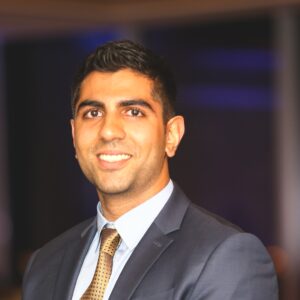
Yuvraj Mohan
Lead Quantum Technology Program Manager,
Rigetti Computing
I work for Rigetti Computing, a full-stack quantum computing company – we do device fabrication to algorithms, and all the hardware and software layers in-between. We want to build larger and more performant QPUs and partner with quantum-enabling companies (such as those making cryogenic systems and quantum software) to streamline the experience for users and application developers. We have 84-qubit QPUs on the cloud and for on-premises installation, to further application research towards quantum advantage. We also have an off-the-shelf 9-qubit QPU (termed Novera), and have created the Novera Partner Program – an ecosystem of cryogenic systems, qubit control electronics, and quantum software providers, making it easier to get hands-on with quantum computing.
I have 10 years of experience in quantum technology with expertise in various levels of the stack, including device design, fabrication, system integration, and software development. My education is in materials science and I have a Master’s degree in nanotechnology, with my previous work focused on diamond-based and photonic qubit systems. This experience allows me to speak across qubit modalities and weigh the pros and cons of each approach. I lead Rigetti’s Quantum Foundry Services business unit, and am at the forefront of our business development activities. As a result, I have built relationships with people throughout the community (domestic and abroad), which would serve the Steering Committee well – in potential partnerships and in guiding QED-C strategy to grow the quantum economy. Finally, I am currently an MBA candidate at UC Berkeley Haas, and I plan to leverage the knowledge and network from this program to get quantum technologies commercialized and broadly adopted.
My vision for the industry in the next year is to establish guidelines for quantum device performance benchmarking, manufacturing and export/import, and strengthening key parts of the supply chain – taking inspiration from the semiconductor industry. Important steps towards this will be building partnerships between organizations whose products complement each other and growing an ecosystem for technology providers and end-users to connect more intimately. In 5 years: increased application of quantum technology and quantum-classical hybrid computing used in production use-cases with business value, as well as regular demonstrations of quantum communication. In 10 years: QPUs are used regularly alongside CPUs and GPUs to enable high-performance computing at unprecedented levels, along with large-scale quantum networking and communication, likely involving heterogeneous architectures with a combination of qubit types.
A specific goal I have for QED-C is to drive quantum computing and communication technologies to commercial maturity. Quantum networking (combining distributed computing resources with the existing fiber optic communication infrastructure) is critical for information security, improving computational capability, and distributed computing. This can be done through supporting relevant research programs and companies, and by guiding policy decisions that influence the resources allocated towards quantum networking and the speed at which it progresses from R&D to productization. Quantum computing development is progressing well, but needs some more push towards integration with HPC and other processor types, which will better allow the near-term capabilities of QPUs to shine.
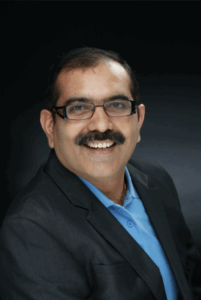
Swamy Sriperumbudur
Chief Digital Officer & Chief AI Officer, ExpediteInfoTech Inc
As a federal contractor and system integrator, our interest in QIST and quantum-enabling technologies is centered on helping U.S. government agencies solve mission-critical challenges. We are focused on building quantum-based applications that address areas such as logistics optimization, secure communications, advanced modeling, and decision support. Our approach emphasizes integrating quantum solutions into existing federal IT environments, ensuring scalability, interoperability, and compliance with government standards. By bridging cutting-edge quantum research with practical mission needs, we aim to accelerate adoption across agencies and deliver measurable value to national security, defense, healthcare, and other critical federal operations.
Swamy Sriperumbudur brings over 25 years of executive leadership and management consulting experience across technology, healthcare, and government sectors. As Chief AI Officer and Chief Innovation Officer at ExpediteInfoTech, he has led complex system integration projects and delivered innovative, emerging technology–enabled solutions to mission-critical challenges. His expertise in strategic planning, digital transformation, and operational optimization allows him to translate emerging technologies into practical, high-impact applications. With a proven track record of leading global teams, securing high-value contracts, and fostering partnerships across private and public sectors, Swamy is well-positioned to provide actionable guidance to the Steering Committee. His experience as a CIO, COO, and thought leader gives him deep insight into government processes, procurement, and technology adoption. Swamy also serves on multiple boards, advising product-enabled companies on global positioning and growth strategies. Recognized for his visionary leadership, collaborative approach, and commitment to social impact, he is an effective contributor to committee deliberations, stakeholder alignment, and long-term strategic initiatives.
Our vision for QED-C and the quantum industry is to accelerate the practical adoption and integration of quantum technologies to solve real-world challenges across government, industry, and society. Over the next year, we aim to strengthen collaborations within QED-C, contributing actionable insights and supporting members in translating quantum research into pilot applications that demonstrate measurable impact. Within five years, we envision a robust ecosystem where quantum-enabled solutions are actively deployed across critical sectors—including defense, healthcare, logistics, and cybersecurity—creating tangible business value and enhancing national competitiveness. We see QED-C as the central hub connecting startups, system integrators, academia, and government agencies to accelerate innovation and establish standardized best practices for quantum adoption. In ten years, we foresee a mature quantum industry where integrated quantum applications are part of mainstream technology infrastructures, driving transformative advancements in computation, optimization, and secure communications. Our long-term goal is for QED-C to be recognized as the strategic driver of a globally competitive U.S. quantum industry, bridging scientific breakthroughs with practical, scalable solutions that benefit the nation and society as a whole.
Accelerate the translation of quantum research into practical applications. I aim to help members, especially system integrators and startups, deploy pilot projects that demonstrate real-world impact for government and industry clients, creating measurable value and driving adoption. Strengthen the quantum ecosystem through collaboration and standardization. I plan to foster deeper partnerships among academia, government agencies, and private industry while promoting best practices and interoperability standards that accelerate innovation and position the U.S. as a global leader in quantum technologies.
